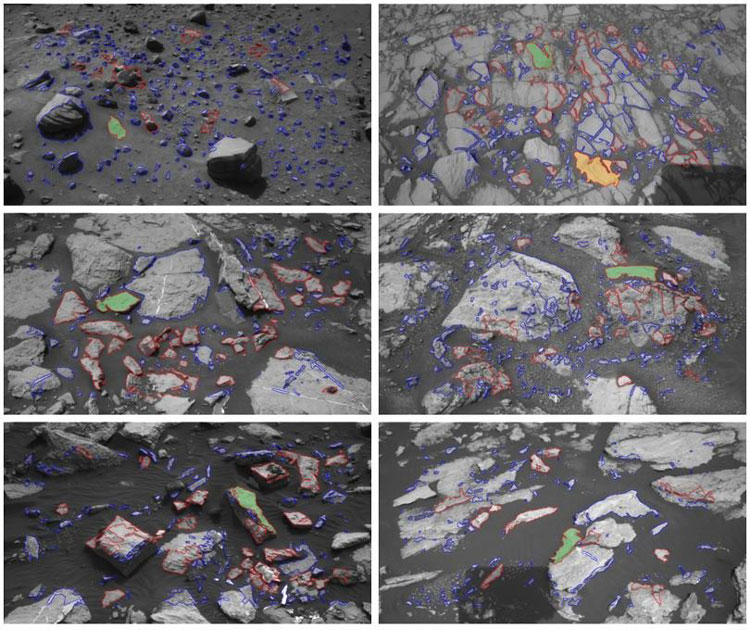Curiosity Rover can now run experiments without humans
As far as we are aware, Mars is a planet that is populated entirely by robots, and not aliens. Finally, efforts to make the robots more autonomous and explore the rocky surface of Mars on their own have been successful, and now these bots in turn will be able to teach us more about our neighboring planet in the solar system.
Software installed upon the Curiosity Rover, which helps to control its laser, has made it more efficient at self-selecting rocks and objects to study. The system, called Autonomous Exploration for Gathering Increased Science (AEGIS), has allowed the robot to pick and examine rocks on its own correctly 93% of the time. It is able to work in a precision pointing mode and a rock selecting mode.
“In the target selection mode we run AEGIS without any guidance from people on the ground about which target to pick,” Raymond Francis, from NASA, said. “We give it guidance of what type of geological material to prefer and then we command it to look around and find the target that most matches what the scientists asked for”.
While the software system is in operation it detects outlines of objects (potential targets) on the Martian floor. These are then categorized based on data from previously collected images.
In the picture below, blue targets were rejected in filtering and red targets for analysis were kept in its system. The top target, however, is colored green. This would then be studied further.
Overall, the autonomous system allows researchers on Earth to save time and work on other parts of the Mars mission. Time can be saved for humans as Mars has a longer day than Earth’s 24-hours and constantly requires those working on the missions to adapt their schedules.
Curiosity has been on Mars since 2012 and the AEGIS software was only made operational last year. The software makes up 21,000 of the Rover’s 3.8 million lines of code and this is the first time the robot has been able to conduct science autonomously, Francis continued.
Between May 2016 and April 2017, the software has controlled Curiosity’s laser spectrometer 54 times and has been ‘overwhelmingly’ successful.
The laser on Curiosity is part of its ChemCam system, which measures and analyzes the chemical composition of items smaller than 0.04”. The laser is used to clear away the dust from Martian rocks and the camera feature is then able to take images.
The 2.5km the rover travelled during the one-year study period was across previously unexplored ground. Without the software, it was predicted the robot would only analyze 23% of the materials correctly. The work has been published in the Science Robotics journal.
“We’re able to make use of the time, when before we couldn’t,” Francis said. “We don’t have the ability to be in contact with the rover at all of the times. Sometimes the planet is rotating and it is on the far side and most of the science data comes back through the orbiters and they’re not always overhead.”
The AEGIS software was originally developed for the Mars Exploration Rover and has also been in use on the Opportunity Rover since 2010. On the two rovers, the system allows them to autonomously select targets from its navigation cameras and then allow them to be studied further. “As compared with waiting for ground-in-the-loop targeting, this can save one to several days of mission time,” the paper stated.
Going forward, Francis said AEGIS the automated software will be used ‘from day one’ on the Mars 2020 Rover. “We’re looking at other places farther out in the solar system where the round trip radio signal time at the speed of time is even longer. There it will be even more important to give the spacecraft more autonomy.”



Comments are closed, but trackbacks and pingbacks are open.